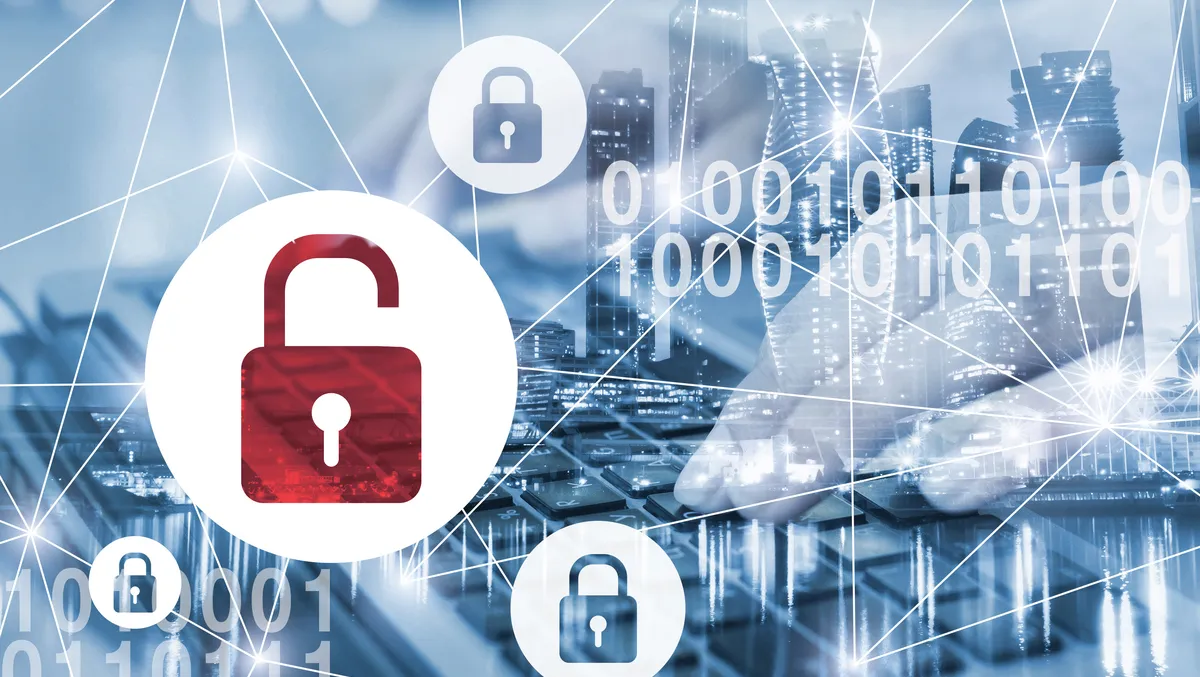
A third of security breaches are going undetected
Gigamon has announced its Hybrid Cloud Security trends report, emphasising a significant gap between the perception and reality of how secure organisations truly are from cyberthreats.
The annual survey of over 1,000 IT and Security leaders from across the US, EMEA, Singapore and Australia uncovered that while surface-level confidence around hybrid cloud security is high, with 94% of global respondents stating their security tools and processes provide them with complete visibility and insights into their IT infrastructure, the reality is nearly one third of security breaches aren't spotted by IT and Security professionals.
According to Flexera, 74% of organisations now exist in the hybrid cloud and this infrastructure is considered the 'norm' by Forrester analysts. Yet it comes with a number of security concerns, clearly recognised by respondents to the Gigamon Hybrid Cloud Security survey; 93% predict cloud security attacks are only going to increase, and 90% had experienced a breach in the last 18 months. The issue is that 31% of breaches are being identified later down the line, rather than preemptively using security and observability tools – either by data appearing on the dark web, files becoming inaccessible, or users experiencing slow application performance (likely due to DoS or inflight exfiltration). This number rises to 48% in the US, and 52% in Australia.
The good news is that collaboration across IT is on the rise. Some 96% of IT and security leaders around the world believe cloud security is everyone's responsibility, and almost all (99%) see CloudOps and SecOps working towards a common goal. Yet there is still more to be done, while CloudOps seems to be leading on strategy, 99% of respondents claim a lack of a security-first culture means vulnerability detection is often siloed to the SecOps team.
Unexpected Issues Keeping CISOs up at Night
The Gigamon report also identified that the key stressors for IT and security leaders in 2023 aren't what many may have anticipated. It is unexpected blind spots (56%), legislation (34%) and attack complexity (32%) that keep CISOs and other IT leaders up at night, while a lack of cyber investment is only worrying 14% of global respondents, along with just 20% who were concerned about the ongoing skills gap. In fact, only 19% claim effective security education for staff is a crucial factor for gaining confidence on IT infrastructure security. Respondents from France and Germany are slightly more concerned about skills, with 23% and 25% respectively stating they need access to skilled people in the cloud. Instead, legislation is a growing worry on a global scale, and is a particular issue for the UK and Australia: 41% in the UK and 59% in Australia see change in cyber laws and compliance as a key concern.
Survey respondents generally acknowledged blind spots across their hybrid cloud infrastructure:
The report found 70% lack visibility into encrypted data, a number that rises to 79% in Germany. Some 35% had limited insights into containers, which increases to 38% in France and 43% in Singapore. Just under half (48%) had insights into laterally moving data, although the US leads the market here with 64% achieving East-West visibility.
Yet despite flagging blind spots as their leading stressor, one third of CISOs and 50% of other IT and Security leaders admit they lack confidence in knowing where their most sensitive data is stored and how it is secured.
"These findings highlight a trend of critical gaps in visibility from on-premises to cloud, the danger of which is seemingly misunderstood by IT and Security leaders around the world," says Ian Farquhar, security CTO at Gigamon.
"Many don't recognise these blind spots as a threat, yet East-West traffic – laterally moving data – and encrypted traffic can be incredibly dangerous in the hybrid cloud world.
"We've seen previous reports that highlight the vast quantity of malware that hides behind encryption. Considering over 50% of global CISOs are kept up at night by the thought of unexpected blind spots being exploited, there's seemingly not enough action being taken to remediate critical visibility gaps."
Deep Observability Facilitates the Zero Trust Journey
The Gigamon report on Hybrid Cloud Security trends points to Zero Trust as another IT and Security leader priority. In fact, there's an upward trend of how often this security framework is discussed at a board level; 87% of global respondents say Zero Trust is spoken about openly by the Board, a 29% increase compared to findings from 2022.
Yet while half of all respondents to this year's survey stated that Zero Trust is crucial to boosting confidence levels that their organisation is secure, the reality is that many teams simply do not have the visibility to enable it. The UK (39%), the US (42%) and Australia (41%) are leading the market when it comes to achieving visibility to enable this framework, while France (26%), Germany (29%) and Singapore (25%) all fall behind. Uncertainty about the reality of Zero Trust is high in France and Singapore in particular and all global respondents are recognising the value of deep observability – the addition of real-time, network-derived intelligence to amplify the power of metric, event, log, and trace-based (MELT) security and observability tools – for building a foundation for Zero Trust. Further, 97% also believe deep observability is an important element of cloud security – a rise of 8% from last year.
"Zero Trust is still very much a 'work in progress' for organisations around the globe, but it's positive to see that at least half of the IT and security leaders we surveyed view it as crucial to boosting security posture and even more positive to see them recognise the value of visibility," says Mark Jow, EMEA CTO at Gigamon concludes,
"Deep observability and going beyond traditional MELT approaches is crucial if organisations are to advance successfully on their Zero Trust journeys, securing their hybrid cloud infrastructure and eradicating the critical visibility gaps that are clearly causing headaches and restless nights."


